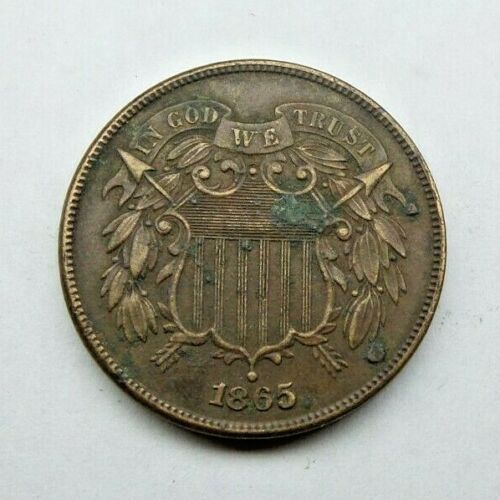On Using God to Divide
The national motto, “In God We Trust,” has been divisive from the day of its minting.
According to historian Harry Stout in his brilliant book, Upon the Altar of the Nation: A Moral History of the Civil War, Northern clergy led—and Southern clergy took notes and then caught up—in the battle to show how religious and faithful they were. By promoting fast days (which President Lincoln declared) and preaching often on the righteousness of the cause, clergy importuned their flocks to show their faithfulness and, thus, tilt God to their side.
 The South wrote God into the Constitution. Northern clergy urged their elected leaders to do the same. Lincoln was among those who thought that was a bad idea. However, Lincoln did coin, in a real way (and with the encouragement of Treasury Secretary Salmon Chase), a new national motto: “In God We Trust.” The new motto would be stamped on coins (actually, on the two-cent coin). Stout notes the irony of a putting those words on the symbol of greed clergy often damned.
The South wrote God into the Constitution. Northern clergy urged their elected leaders to do the same. Lincoln was among those who thought that was a bad idea. However, Lincoln did coin, in a real way (and with the encouragement of Treasury Secretary Salmon Chase), a new national motto: “In God We Trust.” The new motto would be stamped on coins (actually, on the two-cent coin). Stout notes the irony of a putting those words on the symbol of greed clergy often damned.
Jump forward to the Cold War. Clergy and elected leaders—really, in the whirlwind of politics and religion I sometimes can’t sort which cohort leads and which is acolyte or water-carrier—throughout much of the political-religious spectrum distinguished between godly America and godless communism.
President Eisenhower was a fan and cheerleader of that point of view. One Sunday, as he attended the New York Avenue Presbyterian Church, he heard the Rev. George Doherty argue that America should have a stronger, public connection to God. Prompted by that sermon, Eisenhower supported adding “under God” to the Pledge of Allegiance and making “In God We Trust” the national motto.
God-fearing “us” versus godless “them.”
Let’s jump over the rise of the Moral Majority and President Reagan’s speech to conservative Christians that “you can’t endorse me but I endorse you.” Reagan used his pulpit and riffed on the mashup of “light to the nations” and “city on a hill” to invent the “shining city on a hill,” to keep drawing on that barrel Eisenhower tapped: America is godly. The USSR is godless.
But in 1989 the Berlin Wall fell and the Soviet Union and its empire broke into states and nationalities. Russian Orthodoxy re-emerged as officially sanctioned. Russia evolves to understand itself as a prominent, or the pre-eminent, carrier of the Christian tradition.
Meanwhile, in the U.S., Speaker Newt Gingrich introduced the playbook for politics being war: the other side is the enemy, not “my worthy opponent.”
Weaponize everything.
And, the trend grew toward American generations de-congregating from religious institutions with more of those “nones” identifying as Democrats or independents than Republicans.
In dozens of states today, laws either encourage or mandate that the weaponized “In God We Trust” shall be displayed in every classroom.
“In God We Trust” is one of the flags carried into the culture wars between Americans. I see fist-pumping that motto as one of the indicators the nation is cracking.
Writing as a Christian, I don’t have a clue as to what “in God we trust” means for any nation. I get what the words can mean for individuals, families, and faith communities. I would love to hear interviews of elected leaders, in my state and in the nation, responding to: “Tell me about the god in whom in the nation trusts, or aspires to trust.” I am curious whether that god resembles anyone other than ourselves.
Those would be revealing interviews.
E Pluribus Unum, “From many, one,” continues to be the motto that inspires me. Of course, that idea could also be used to polarize the country—as can virtually any idea today. “Many”—we Americans are that, indisputably. Are we in any way “one” or could we be? For all of the nation’s history, that has been an essential question. Our future, if there is an “our” in that future, depends on the answers.
At least the words don’t lead immediately into bearing false witness.
Dr. Gary Peluso-Verdend is president emeritus at Phillips Theological Seminary and is the executive director of the seminary’s Center for Religion in Public Life. The opinions expressed in this blog are those of the author. Learn more about the Center’s work here and about Gary here.


Comments are closed.